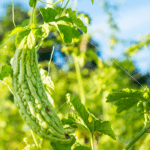Optimal Crop Sequencing: Enhancing Productivity through Succession Planting
Introduction
Are you a devoted gardener looking to increase the output of your garden? Do you envision reaping fresh harvests all during the growing season? Consider succession planting, a clever and effective method that enables you to reap numerous harvests from a single garden patch. In this extensive tutorial, we’ll go deep into the succession planting world, examining its numerous approaches and arming you with the knowledge and pointers you need to properly execute it in your own garden. Join us on this environmentally friendly adventure as we reveal the secrets of succession planting and discover how to turn your garden into a paradise of eternal harvest.
Staggered Planting
Planting at Intervals
A crucial component of succession planting is staggered planting. In order to provide a steady supply of harvestable crops throughout the growing season, it entails sowing crops at regular intervals. You can strategically sow a section of the crop at the start of the season and then plant additional seeds or seedlings every 7–21 days after that, as opposed to planting a complete row of veggies all at once. As each succeeding crop matures, you can do this to enjoy a continual stream of fresh produce. By using this technique, you can lengthen the harvesting season, avoiding a sudden glut of produce and ensuring a more controllable yield.
Ideal Vegetables for Staggered Planting
Many veggies are suitable for planting in succession. These include, among other things, beans, beets, broccoli, cucumbers, carrots, lettuce, radishes, and cucumbers. After their initial strong output, these crops have a tendency to produce less consistently throughout the season. You can maintain a consistent supply of fresh veggies and prevent the feast-or-famine cycle of harvests by planting them at irregular intervals. To get the greatest results, it’s crucial to take into account the particular growing requirements and ideal planting seasons for each crop.

Same Spot, Different Plants
Replanting and Composting
Replanting in the same site with new plants as soon as the previous crop is mature or past its prime is another technique of succession planting. For instance, once the spring greens are completely developed, you may remove them from the garden bed, replenish the soil’s nutrients using organic compost, and then replant the area with a different variety of vegetables. This technique makes the most of available space and enables you to cultivate a range of crops during the growing season in the same spot.
Planting Combinations
There are countless opportunities for inventive planting combinations when using the same place, different plants strategy. You can experiment with different pairings to make the most of your space and broaden the variety of your crop as long as the plants have enough time to mature before the end of the growing season. For instance, you may plant another crop in their place once the beans have been harvested and the salad greens have matured. With only a small amount of garden area, this constant rotation of plants guarantees a varied and plentiful crop.
Companion Planting
Interplanting Crops with Different Maturity Dates
By utilising their distinct maturation dates, companion planting, sometimes referred to as intercropping, entails planting two or more crops simultaneously. You may maximise production and utilise your yard space by using this method. You can maximise production by combining quickly maturing crops with slower-growing plants to make the best use of the available resources. For instance, you can grow tomatoes or peppers with radishes, carrots, or green onions. Vegetables that mature more quickly can be harvested without upsetting crops that mature more slowly nearby.

Suitable Companion Plants
For effective development and reciprocal benefit in companion planting, selecting appropriate plants is essential. While some plants have a natural affinity for one another, others could compete with one another for nutrients or draw pests. For instance, growing fragrant herbs like basil or cilantro close to tomatoes can aid in warding off pests that frequently harm tomato plants. Similar to this, marigolds planted next to cucumbers or squash can ward off nematodes and serve as organic pest deterrents. You can build a vibrant and peaceful garden ecology by being aware of the symbiotic relationships between plants.
Tips & Tricks for Succession Planting
Adding Organic Compost
It’s crucial to replace the soil with organic compost if you want to ensure the health and vigour of your succeeding crops. Compost enhances soil structure, provides a rich source of nutrients, and encourages good microbial activity. Compost should be incorporated into the soil before planting each new crop to ensure the best possible growing conditions. When plants compete for resources in the same garden bed, nutrient depletion might happen. This practise not only improves soil fertility but also lowers that risk.
Reusing Planting Spaces
Effective area utilisation is essential for succession planting. After a mature crop is harvested, clear the area of any residual plant matter, soften the soil, and add new compost to get ready for the subsequent planting. Reusing the same planting areas helps you maximise your garden’s productivity by removing unused space. To avoid the accumulation of pests and diseases that can afflict particular plant families, remember to rotate your crops.
Starting Seeds in Pots
Consider starting seeds indoors in trays or pots to keep a constant supply of seedlings for succession planting. With this method, you can germinate seeds in a controlled setting before putting them in the garden when it’s ready. You can guarantee a consistent supply of young plants that are prepared for transplantation as soon as space opens up in your garden by beginning seeds beforehand. This method is especially beneficial for crops with extended growing seasons or strict temperature requirements.
Choosing Quick-Maturing Plants
Quick-maturing vegetable types should be chosen to maximise the success of succession planting. Fast-growing plants provide a shorter interval between harvests, allowing you to take advantage of a constant flow of fresh produce. Consider parameters such plant size, suggested planting season, and days to maturity when selecting quick-maturing cultivars. By making this wise choice, you can properly arrange your succession planting timetable and guarantee a smooth changeover from one crop to the next.
Benefits of Succession Planting in Kitchen Gardens

Improved Yields and Variety
Increased yields and variety are among the many advantages of succession planting. By using this method, you may maximise the productivity of your garden by harvesting vegetables consistently throughout the growing season. Furthermore, succession planting enables you to vary the kinds of vegetables you grow, allowing you to take advantage of a variety of fresh fruits and vegetables directly from your garden.
Weed Control
You can naturally control weed growth by planting crops one after another. As new crops sprout and develop, their thick foliage covers the soil, reducing the area weeds have to germinate and grow. This organic weed control encourages a more sustainable and environmentally friendly gardening method by reducing the need for unnecessary hand weeding or the application of chemical herbicides.
Pest and Disease Management
Succession planting can also aid to improved pest and disease management. By rotating crops and introducing new plants into the garden, you disturb the life cycles of pests and diseases, minimising the risk of infestations. Additionally, companion planting practises can help prevent specific pests or attract beneficial insects that aid with pest control. These integrated pest management solutions limit the need for toxic pesticides, providing a healthier and more balanced garden ecology.
Monitoring Soil Fertility
With succession planting, it is vital to monitor and maintain soil fertility throughout the growth season. Regularly evaluating the soil’s nutrient levels and pH helps you to make required adjustments to ensure ideal growth conditions for subsequent crops. By understanding the individual nutritional requirements of different plants and implementing proper soil amendments, you can sustain high productivity and ensure the health of your garden throughout time.
Frequently Asked Questions (FAQs) about Succession Planting
What does plant in succession mean?
Succession planting refers to the practice of planting crops at different times to ensure a continuous supply of harvest throughout the growing season. By staggering the planting dates, you can enjoy a steady stream of fresh produce.
What is the plant order of succession?
The plant order of succession refers to the sequence in which different crops are planted and replaced in a specific area. It involves carefully planning the timing and selection of crops to maximize productivity and optimize space utilization.
What is agricultural succession?
Agricultural succession is the natural or planned transition of plant communities in an agricultural setting over time. It involves the gradual replacement of one plant species or crop with another, influenced by various factors such as soil fertility, climate, and management practices.
Why is plant succession important?
Plant succession is important for several reasons. It helps maintain soil health by reducing the risk of nutrient depletion and erosion. It maximizes yields by utilizing space efficiently and minimizing downtime between harvests. Additionally, it promotes pest and disease management through crop rotation and diversity.
What is plant succession and its type?
Plant succession refers to the predictable process of plant community development over time. It can be classified into two types: primary succession, which occurs on bare, newly formed land, and secondary succession, which occurs after disturbances such as farming or natural events like fires.
What are the factors affecting plant succession?
Several factors influence plant succession, including climate, soil conditions, availability of light, water availability, competition, and disturbance. These factors interact to shape the composition and structure of plant communities over time.
What type of succession is soil?
Soil succession is a type of primary succession that occurs when bare, rock surfaces or newly formed land gradually develop soil. Over time, pioneer plants, such as lichens and mosses, colonize the area and create conditions for the establishment of other plant species.
Who is the father of plant succession?
Frederic Clements, an American botanist, is often regarded as the “father of plant succession.” He developed the concept of ecological succession and proposed the theory of climax communities, which describes the stable endpoint of succession in a given environment.
What is plant succession in agricultural land?
Plant succession in agricultural land refers to the planned rotation and replacement of crops to optimize productivity and sustain soil fertility. By carefully selecting crops with different nutrient requirements and growth characteristics, farmers can maintain a productive and sustainable agricultural system.
What does plant in succession mean?
Succession planting refers to the practice of planting crops at different times to ensure a continuous supply of harvest throughout the growing season. By staggering the planting dates, you can enjoy a steady stream of fresh produce.
What is the plant order of succession?
The plant order of succession refers to the sequence in which different crops are planted and replaced in a specific area. It involves carefully planning the timing and selection of crops to maximize productivity and optimize space utilization.
What is agricultural succession?
Agricultural succession is the natural or planned transition of plant communities in an agricultural setting over time. It involves the gradual replacement of one plant species or crop with another, influenced by various factors such as soil fertility, climate, and management practices.
What is succession in crop rotation?
Succession in crop rotation refers to the practice of rotating crops in a specific order to improve soil health, manage pests and diseases, and enhance overall crop productivity. It involves systematically changing the types of crops grown in a particular area over time.
Remember to employ a variety of writing techniques, such as varying sentence lengths and structures, utilizing diverse paragraph lengths, employing a wide range of vocabulary, incorporating rhetorical questions, providing contrasting viewpoints, including anecdotes and personal experiences, and maintaining an informative and enthusiastic tone
Conclusion
In conclusion, succession planting is a powerful approach that enables you to make the most of your garden space, lengthen the harvest season, and enjoy a broad assortment of fresh vegetables throughout the year. By employing staggered planting, intercropping, and companion planting strategies, you may maximise area use, boost yields, and efficiently manage pests and diseases. With careful planning, soil upkeep, and selection of compatible species, you may transform your garden into a permanent harvest paradise. So why wait? Embrace succession planting and begin on a path of continuous plenty in your very own kitchen garden.
For the greatest farming techniques, goods, and assistance, you can always visit www.shehrikisaan.com, a platform committed to providing farmers with high-quality agricultural products, professional guidance, and access to the newest farming technology. Join us in the objective of promoting sustainable agricultural techniques and generating a brighter future for farmers and the environment.






